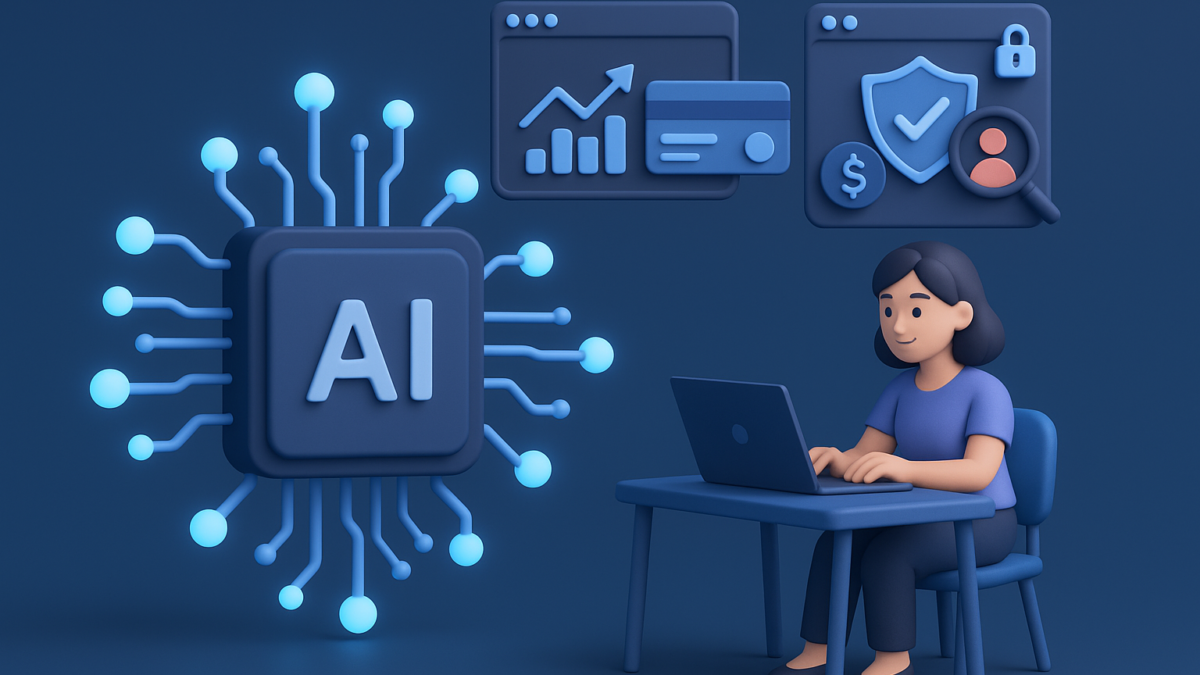AI in FinTech: How Machine Learning Is Transforming Risk, Credit & Fraud Detection
Table of Contents
The financial services industry is evolving faster than ever. With digital payments, online banking, and cross-border transactions surging, financial institutions face unprecedented challenges in managing risk, assessing creditworthiness, and detecting fraud.
Traditional models, built on static data and manual oversight, simply can’t keep up. That’s why in 2025, artificial intelligence (AI) and machine learning (ML) are at the heart of FinTech innovation—driving smarter, faster, and safer financial decisions.
How Machine Learning Powers FinTech
AI and ML thrive on pattern recognition and prediction—two critical functions in finance. With billions of data points streaming in from payments, accounts, devices, and even social behavior, machine learning algorithms can process what humans cannot.
This translates into three powerful applications: risk assessment, credit scoring, and fraud detection. Let’s break them down.
1. Smarter Risk Assessment
Risk management has always been central to banking. But traditional systems often rely on limited datasets, leading to blind spots.
AI-driven risk models:
- Pull real-time signals from multiple sources (spending habits, geolocation, device data).
- Continuously learn from transaction patterns, adjusting risk scores dynamically.
- Provide predictive insights into emerging risks before they escalate.
Example: JP Morgan uses AI for real-time risk analysis across trading platforms, reducing exposure to sudden market swings.
2. Fairer & Faster Credit Scoring
Conventional credit scoring models leave millions of people underserved. If you lack a credit history, you’re invisible to the system—even if you pay bills, rent, or mobile services on time.
Machine learning solves this problem by:
- Leveraging alternative data sources (utility bills, e-commerce behavior, mobile payments).
- Enabling real-time scoring for instant loan approvals.
- Reducing bias by analyzing broader data patterns instead of relying on a narrow credit report.
Impact: In 2025, FinTech startups in Asia and Africa are using ML-powered scoring to extend microloans to previously “unbankable” communities, fueling financial inclusion.
3. Advanced Fraud Detection
Fraud is one of the biggest threats to financial stability. With digital transactions soaring, fraudsters are becoming more sophisticated.
AI-driven fraud prevention includes:
- Real-time anomaly detection (flagging transactions that deviate from a user’s normal behavior).
- Multi-layer authentication triggers when suspicious activity is detected.
- Continuous learning, making it harder for criminals to “game” the system.
Case Study: PayPal uses ML algorithms to monitor millions of transactions per second, reducing fraud losses while maintaining a smooth user experience.
The Market Impact: AI as a Growth Driver
- The AI in FinTech market is expected to grow at 23% CAGR through 2030.
- Banks adopting AI-powered credit and fraud systems report 30–40% fewer fraudulent losses.
- Lenders using AI see faster approvals, with turnaround times shrinking from days to minutes.
Clearly, AI is no longer an experiment it’s a competitive necessity in FinTech.
Challenges & Considerations
Of course, AI adoption isn’t without hurdles:
- Data privacy: Stricter global laws (GDPR, CCPA) require transparent data handling.
- Bias in algorithms: If training data is flawed, outcomes may reinforce inequality.
- Cost of implementation: Building enterprise-grade AI systems requires significant investment.
That said, the long-term ROI—lower fraud, faster approvals, stronger inclusion—makes it worth the effort.
How This Ties Into the AI Productivity Revolution
Interestingly, what’s happening in FinTech parallels what we’re seeing in workplace productivity. Just as banks are using AI to automate and augment decision-making, professionals are turning to tools like Cluely: The Invisible AI That Thinks for You in Every Meeting to handle information overload.
The message is clear: AI isn’t replacing humans—it’s empowering them to focus on higher-value work.
The Bigger FinTech Picture
Fraud detection and credit scoring are just part of the story. AI is also transforming:
- Wealth management via robo-advisors
- Trading strategies through algorithmic models
- Insurance underwriting with predictive analytics
Conclusion: AI Is Reshaping Finance in 2025
AI in FinTech is no longer futuristic—it’s mainstream. From smarter risk assessment to inclusive credit scoring and robust fraud detection, machine learning is transforming the industry at every level.
As adoption accelerates, the winners will be those who use AI not just to cut costs, but to create trust, expand access, and enhance customer experience.
CTA
Want to stay ahead of the curve in FinTech and AI innovation?
Subscribe to iTMunch for weekly insights into how technology is reshaping finance, marketing, and the future of work.
You May Also Like:The Future of Whitepaper Marketing: Syndication 2.0 in 2025





